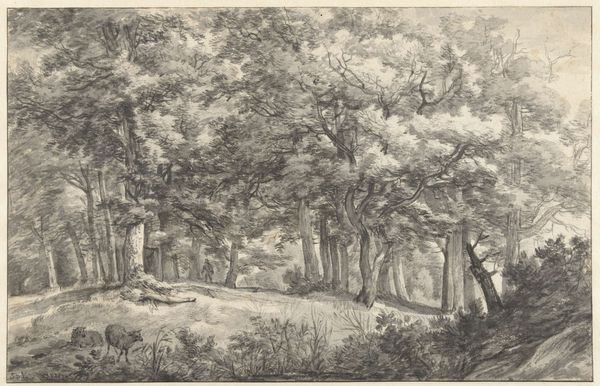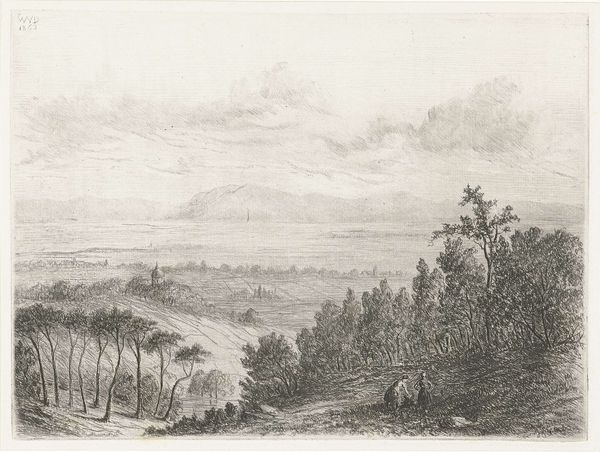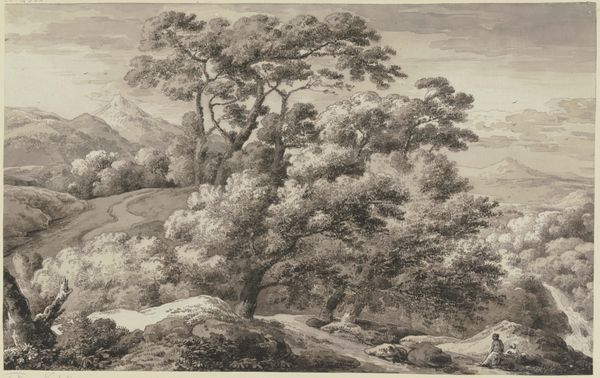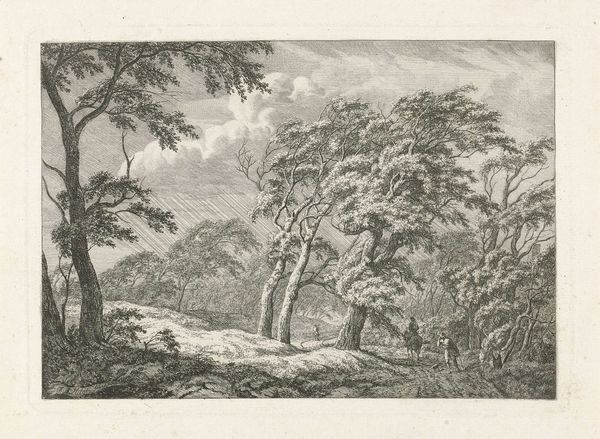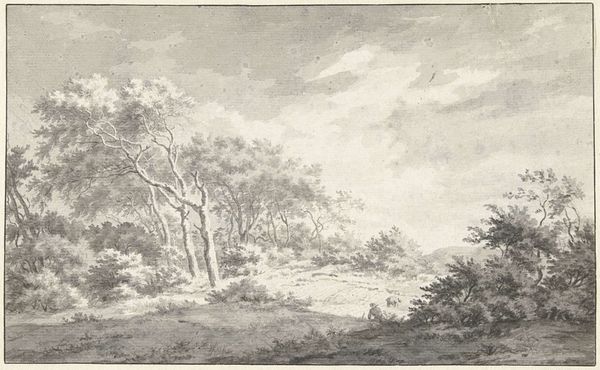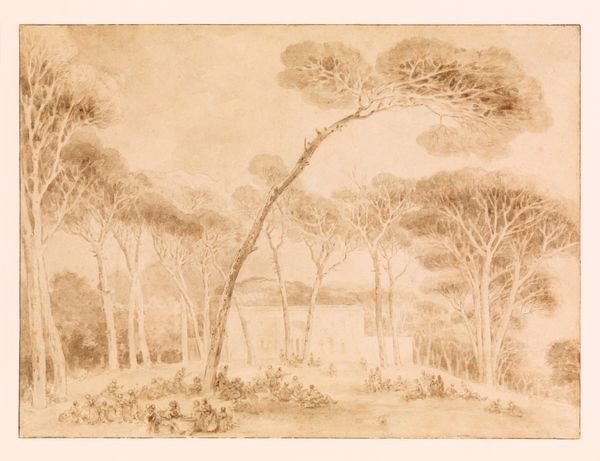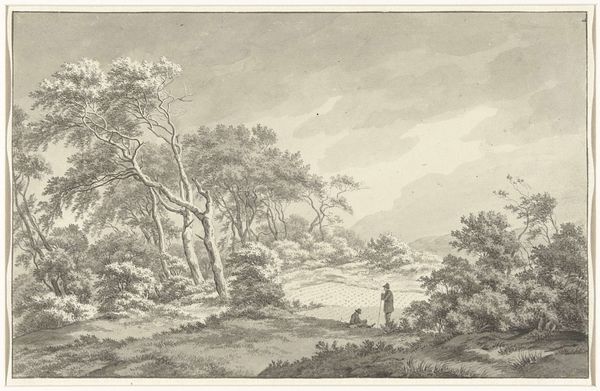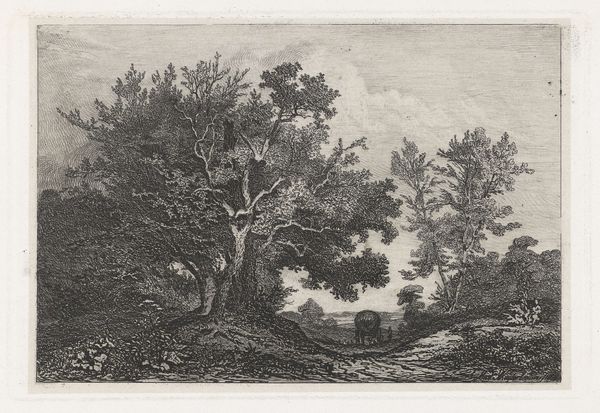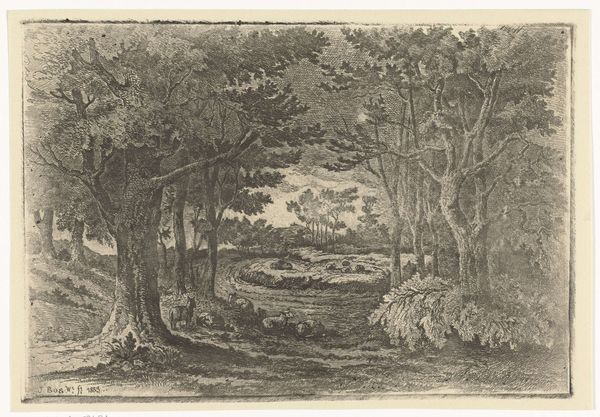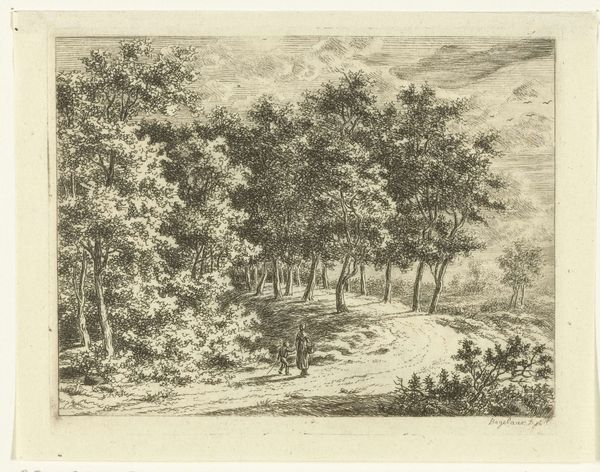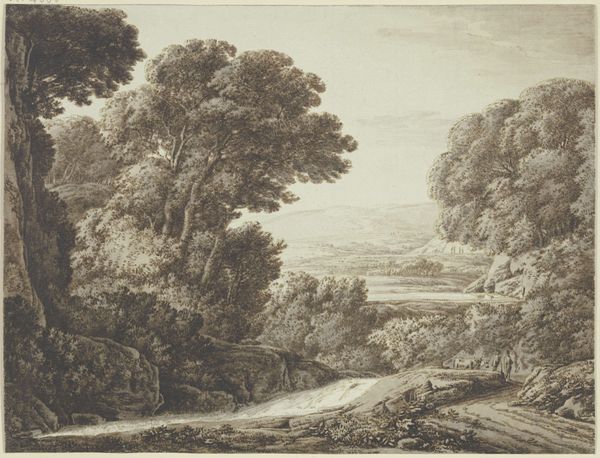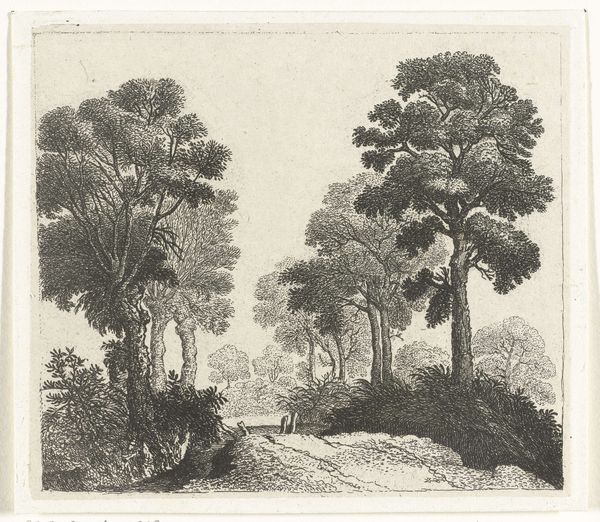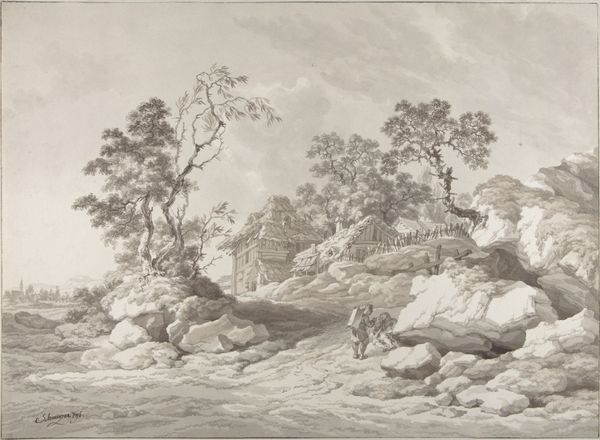
drawing, pencil
#
drawing
#
pencil sketch
#
landscape
#
charcoal drawing
#
pencil drawing
#
romanticism
#
pencil
#
northern-renaissance
Dimensions: height 547 mm, width 748 mm
Copyright: Rijks Museum: Open Domain
Curator: Looking at this pencil drawing by Hendrik Voogd, likely rendered between 1788 and 1839, titled "Boslandschap in de omgeving van Rome met ondergaande zon," one is immediately struck by the dramatic light. Editor: Yes, the light indeed. The pencil work and the choice of depicting sunset give the landscape this kind of golden age pastoral feeling—a bittersweet melancholy pervades the scene. Curator: That melancholy seems fitting when considering Voogd's biography. He journeyed to Rome from the Netherlands, joining a community of artists drawn to its classical heritage and leaving behind the familiar. Do you think this might represent that desire for somewhere else, that longing? Editor: I absolutely do. Beyond personal narrative, this drawing aligns beautifully with the broader Romantic movement emerging then. Nature became a vessel through which artists conveyed powerful, subjective emotions and political notions of a return to some earlier golden era before modern complexities. Even the setting near Rome, historically important, reinforces this layered symbolic language. Curator: Absolutely. Notice how the figures at the lower center act as repoussoir elements—grounding the immediate scene while amplifying the feeling of spaciousness, making nature more dramatic by showing human submission. But what do they signify? Editor: I find them less significant for specific representation, instead symbolizing how culture becomes a key for society's construction of meaning out in nature, a lens through which our species has attempted to capture meaning in non-built settings. Voogd, a transplant to Italy, almost asks whether cultural legacy and raw environment are really so distinguishable, even as dusk arrives. Curator: Very perceptive. Considering Voogd’s northern European origin, he probably looked upon Roman landscapes differently. His artistic interpretation invites questions about how landscapes become invested with personal history. Editor: Agreed. And through art, landscape gets coded for entire civilizations! It is quite beautiful when a simple-seeming sketch prompts deeper contemplation. Curator: Precisely! "Boslandschap in de omgeving van Rome met ondergaande zon" offers enduring insight, bridging artistic sensibility with historical circumstance. Editor: I concur, and what an example of how an aesthetic medium such as drawing offers avenues into personal narratives set within great spans of cultural time.
Comments
No comments
Be the first to comment and join the conversation on the ultimate creative platform.
